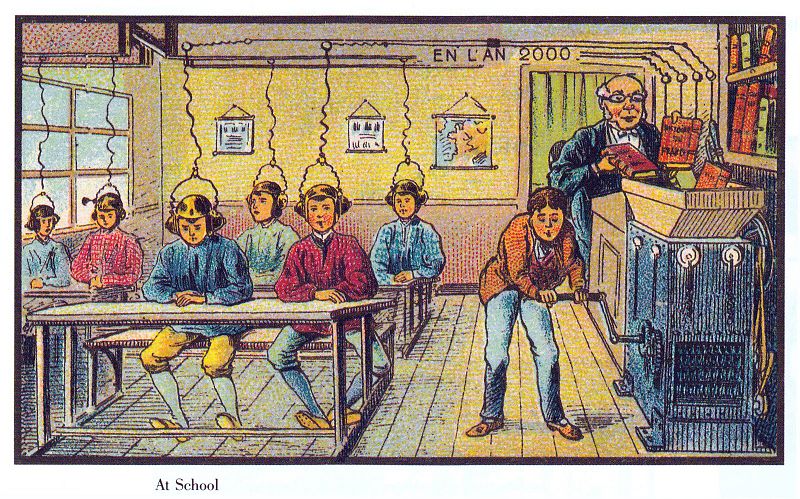Uneasy Equations
August 16th, 2012
The Commentary section (pp. A19-20) in the latest issue (8/17/12) of the Chronicle of Higher Education features two well-intentioned articles: “Don’t Confuse Technology with Teaching” and “Why Online Education Won’t Replace College — Yet.” There’s a fair amount of sage stuff in each, I guess, but I’m struck by why anyone would feel the need to read (or write or publish) articles so titled.
The answer is not far to seek. Both articles begin by talking, not about online courses or tech-mediated teaching generally, but about MOOCs (massive open online courses). Here we go again. As I tried to indicate in an earlier blog entry, MOOCs are hardly representative of online instruction. On the contrary, they are anomalous. Tried by some elite colleges with massive endowments, most of them neither requiring tuition nor offering credit, they nevertheless have some saying they will change the “business model” of higher ed (particularly those trendologists who can’t use “technology” unless it’s modified by “disruptive”); most students who take such courses don’t complete them, and they touch such a small part of the college-going population that they can’t be said to have any significant impact, except by grabbing headlines.
Still, they must be critiqued by some because they are hyped by others, and I guess I’m caught up in this myself. But what really bothers me is the way MOOCs are suddenly a kind of synecdoche for online or tech-mediated instruction, as these articles indicate. Remember synecdoche? — the figure of speech where a part stands for a larger whole? It’s interesting that, when I check Google for definitions of synecdoche, the first three (Wikipedia, Dictionary.com, and Merriam-Webster) all use the example “fifty sail for fifty ships.” This works only as a quaint recollection of a time when most large sea-going vessels had sails; as an example of synecdoche, it’s also unrepresentative of current reality, an archaism.
The equation of MOOCs with online instruction spins the other way, to some sort of fantasy or science fiction view of college instruction where students get what they need in largely unsupervised brigades. This dystopian vision is a variant on the approach of Gradgrind, Dickens’s powerful and enduring personification (in Hard Times) of the view that education is basically a content dump. (“Thomas Gradgrind now presented Thomas Gradgrind to the little pitchers before him, who were to be filled so full of facts.”) A French artist over a century ago nailed the ridiculousness of this take on education in an image:
College faculty know better than to think teaching and learning work this way, and so they should know better than to think online education (the anomalous MOOCs excepted) is anything like that. In the meantime, it apparently needs to be said that an imperative like “Don’t Confuse Technology with Teaching” is about as, well, imperative as “Don’t Confuse Your Kitchen with Your Dinner.”
See also:
- CUNYfying Uses of Technology (December 5th, 2016)
- Both/And — or When You Come to a Fork in the Road, Take It (March 18th, 2015)
- The Problem(s) with Innovation (May 12th, 2014)
- MOOCs: Flame out or Flame on? (March 28th, 2014)
- Feeling Disrupted? (January 30th, 2014)



